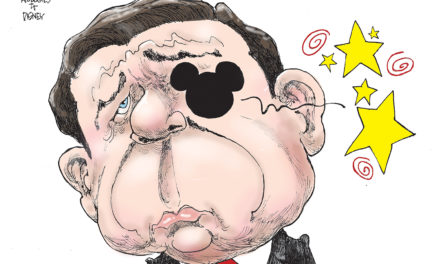In its decisive vote to cut funding for Memphis City Schools, Memphis City Council showed the political courage and the new thinking that are becoming characteristics of this overhauled, and dramatically improved, legislative body.
Last year, when more a super majority of the Council was replaced, political observers thought – or at least hoped – that they would usher in a new approach to the city’s business.
Nothing punctuated the change more than yesterday’s vote to take city funding for city schools from $93 million down to $20 million. Because of this cut, the Council set the city property tax rate at $3.25, a drop of 18 cents.
The Longest Journey Begins
That may not sound like much to some people, but to us, it was a start.
It was in fact the first step in a journey toward a fairer tax structure, one that addresses the disincentive that Memphians pay to live within the city limits.
It is inarguable that there is no public service more important than public education. And yet, the tax system funding public services must be equitable and even-handed. The tax structure in Memphis is just the opposite.
Reverse Logic
Memphians not only have the highest combined city-county tax burden of any Tennesseans, but our tax structure is built on the backs of people who can least afford it. The poorer you are in Memphis, the more you pay in taxes as a percentage of your income.
The average tax burden for 51 cities across the U.S. – the largest city in each of the 50 states plus the District of Columbia – was 7.3 percent for families earning $25,000; 8.3 percent for families earning $50,000; 9.1 percent earning $75,000; and 9.2 percent at the $100,000 and $150,000 levels.
In other words, most cities have a tax structure that responds to a person’s “ability to pay.” Meanwhile, Memphis’ is antithetical.
Facing Facts
The more a family earns, the less it pays. The family earning $25,000 pays 7.0 percent, right in line with the average for the 51 cities. But, the family earning $50,000 doesn’t pay more. It pays less – 6.2 percent. A family earning $75,000 pays 6.3 percent, one-third less than the national average; and the $100,000 income family pays 5.9 percent and the family earning $150,000 pays 5.6 percent.
In other words, the higher income brackets in Memphis pay a smaller percentage of their income in taxes than families making one-fourth as much. These Memphis high-income families are paying roughly 40 per cent less than the average of 51 cities.
That’s because government has an overreliance on property taxes and sales taxes when compared to other governments across the U.S. With no real options except the two primary tax sources allowed by state law, city and county governments are left with two inequitable places to go for more revenues – the regressive sales tax or the regressive property tax.
Mandated Services
While local efforts to expand tax sources are well-intended, in the end, the current tax structure is so badly flawed that even new sources are just stopgap answers that don’t address the fundamental flaws in the system.
That’s why the Memphis City Council had no choice but to target the services that it is not mandated to provide, but more to the point, it had to look at services that are legally the responsibility of Shelby County Government but are funded by City of Memphis.
Education topped that list, but we expect that the $13 million spent on health services will be next. Like schools, county governments are mandated to fund health departments in Tennessee.
Up And Out
We know the City Council cut in funding for schools is not the optimal way to create public policy, but it’s clear that doing the same thing and expecting different results is not only the definition of insanity, but the definition of political myopia at City Hall.
After all, we’ve been talking for 30 years about putting all school funding where it belongs – on Shelby County’s larger tax base. We’ve also been talking way too long about making the Memphis tax burden more rational, and despite all the talk, nothing had changed.
Meanwhile, the city tax rate has moved up and the middle class has moved out.
Open To Interpretation
While some people want to interpret yesterday’s decision as a vote of no confidence in Memphis City Schools, that was never the primary motivation for the Council. It was always more about tax equity.
Those who attacked the Council yesterday for failing to value our children simply missed the point. It’s not city government’s job to educate our kids, and any way, it’s pretty hard to argue in a city where schools spend $1 billion a year in operating and capital funding that we’re not doing enough for our children.
It seems to us that this is a message that’s not lost on the taxpayers of Memphis. They place the high Memphis tax burden as the second most troubling problem in their city (after crime). It also is, after crime, the reason that the middle class voted with their feet. The public’s understanding of this problem seemed to be reflected in yesterday’s turnout at the Council meeting. With 16,000 employees and 113,000 students, the school district was able to mobilize about 200 people to show up for the meeting.
Right On The Money
While the Memphis City Schools Board of Commissioner may object to the cut in funding, they seem to understand that City Council should rightly be considering precisely this kind of issue. In this regard, Board Chair Tomeka Hart set the proper tone when she said: “It is a conversation that the City Council has to have. They have every right to decide what role municipalities play in the school system.”
It was an example of statesmanship that is often lacking in local public affairs, and was especially impressive in light of the intemperate emails that she has been receiving from City Council member and former school board member Wanda Halbert.
Councilman Bill Morrison was precisely correct when he said that the vote on school funding was about “equalization” of the city tax burden. The Council’s objective is to reduce the tax rate below $3 in the next couple of years, but its ultimate objective must be to pursue a strategy that levels the fiscal playing field by making the Memphis tax rate comparable to Germantown and Collierville.
Conversation Changer
That of course can’t be achieved by cuts in services or responsibilities, but requires a new discussion with Shelby County Government about rationalizing the local tax structure with a fiscal equity plan that assigns local services to the appropriate tax base, such as putting regional amenities like museums and arenas on the broader tax base of county government.
We’ve said here before that often it’s not that we’re coming up with the wrong answers in Memphis. More to the point, we’re not even having the right conversation.
With its vote to cut school funding, Memphis City Council served notice that the conversation is definitely shifting to the right one.




